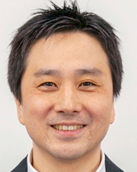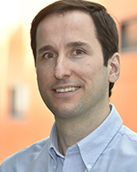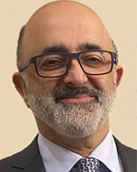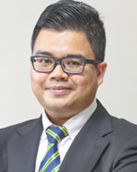In-site compaction techniques for void reduction during 3D printing of a continuous carbon fiber reinforced plastic
 Prof. Masahito Ueda
Prof. Masahito Ueda
Nihon University
Abstract
3D printing is a next-generation standard of composite fabrication. A fully structurally optimized material, with the fiber direction and volume fraction precisely controlled at every location in the composite material, can be realized. However, a 3D-printed continuous carbon fiber reinforced thermoplastic showed relatively low mechanical properties due to voids and low interfacial strength. To resolve the problem, in-site compaction during the 3D printing process is a promising method. In this talk, the 3D printing technique of high-performance continuous carbon fiber composite is introduced. A design approach to maximize the mechanical property of a 3D-printed composite is also explained.
Biography
Professor Masahito UEDA received his B. Eng. and M. Eng. in 2001 and 2003 from Nihon University (Japan), and Ph.D. in Mechanical Engineering in 2006 from Tokyo Institute of Technology (Japan). Since then, he has been working in the Department of Mechanical Engineering, College of Science and Technology, Nihon University. His current research activities include micro-mechanics and 3D printing of polymer matrix composites. He is the president of the Japan Society for Interface (JSI), the chair of the 3D printing composites society in the Japan Society for Composite Materials (JSCM), and an executive board member of the Japan Additive Manufacturing Society (JAMS). He received the best paper awards from The Japan Reinforced Plastics Society (JRPS) in 2011 and from JSCM in 2016, 2019, and 2020.
Robot-assisted nonplanar additive manufacturing of polymer composites for aerospace applications
 Prof. Daniel Therriault
Prof. Daniel Therriault
Polytechnique Montreal
Abstract
Additive manufacturing (AM) or 3D printing is a recent approach that enables the quick fabrication of structures featuring complex geometries without extra tooling and labor. Recent advances in AM of polymer composites allow not only rapid prototyping, but also manufacturing of new components featuring complex geometries and multifunctionality for applications ranging from aerospace to biomedical. However, most composite-based technological applications are currently limited by layer-by-layer printing, small printing envelope, slow printing speed, relatively week mechanical properties, lack of new functionalities in printable materials, etc. Prof. Therriault’s research work at the Laboratory for Multiscale Mechanics (LM2) at Polytechnique Montreal targets the development of various composite materials and their advanced AM processes. On the material side, the team develops new types of composite materials consisting of thermosets, thermoplastics or UV-curable resins reinforced with different fillers such as short carbon fibers, fumed silica, silver nanoparticles, etc. On the manufacturing side, the current efforts focus on the development of advanced customized 3D printing platforms for nonplanar fast production of large composite structures and also for the multi-material printing of multifunctional composites featuring various properties (e.g., mechanical resistance, piezoelectricity).
This presentation covers select recent scientific achievements from Prof. Therriault’s team in composites manufacturing. In particular, a recently developed custom-built 6-axis robotic additive manufacturing platform for nonplanar manufacturing of large thermoset or thermoplastic composite structures is presented. The team developed new slicing methods for processing of 3D model data required for the fabrication of parts directly on nonplanar surfaces. This customizable printing platform will potentially allow full control of the composite’s orientation in 3D space, improve their out-of-plane properties, and accelerate the overall process productivity.
Biography
Daniel Therriault is a full professor in the Mechanical Engineering Department at Polytechnique Montreal. He formerly held the Safran-Polytechnique Industrial Chair on the additive manufacturing of reinforced polymer composites (FACMO Chair, 2018-2023) and also a Canada Research Chair on the fabrication of advanced microsystems and materials (2009-2019). He is the co-director of the Laboratory for Multiscale Mechanics (LM2) and his research interests are mainly related to additive manufacturing of advanced materials and multifunctional composites. Past contributions include the development of innovative additive manufacturing (AM) processes (e.g., six-axis non-planar AM, multi-material multi-process AM, freeform printing), and the design and fabrication of multifunctional materials (e.g., carbon fiber-reinforced thermoplastics, abradable thermosets, piezoelectric and electrically conductive materials) for advanced applications mainly for aerospace but also with high potentials for transportation, energy and biomedical sectors. Several scientific contributions (~121 refereed papers) and multiple innovations (10 patents) originated from the research activities of Prof. Therriault’s research team. He worked or is working on many collaborative research projects with partners such as Safran Group, Bombardier Aerospace, ArianeGroup, Bell Textron Canada, 3M Canada, Dyze Design, NanoXplore, Solaxis Ingenious Manufacturing, Mëkanic, National Research Council Canada (NRC), and the Canadian Space Agency.
Virtual Testing and Digital Twin for the next Chapter of Aviation
 Dr. Lucy Li
Dr. Lucy Li
National Research Council of Canada
Abstract
The next revolution of aviation will be driven by virtual testing and digital twin. Time to market for new aeronautical products has tripled over the past several decades as a result of continual growth in system complexity, and regulatory requirements for new product certification. The ongoing effort among all major OEMs and certification authorities has laid out foundations for certification by analysis to reduce some of the physical testing for the certification purpose. The demand for digital twin for smart maintenance is fueled by the increase in defence investment, with an anticipated growth from $1 billion to $9.2 billion in the coming decade. Advanced modelling and simulation capabilities, in the short term, enable design optimization with improved reliability. In the longer term, the digital capabilities are expected to transform the aerospace industry through certification by analysis by reducing physical testing and enabling faster adaption of sustainable technologies from new material, novel aircraft configuration, and integration of low emission technologies. The modelling and simulation capabilities are the cornerstone of digital twin for tail number- based aircraft sustainment. In addition, the modelling and simulation capabilities are expected to have a great impact on other sectors such as automotive, construction, and energy.
As such, virtual testing and digital twin are regarded as a game changer in transforming aerospace and others - from "Brown" to "Green" business in the 21st century. This keynote presentation will cover modelling and simulation work by Dr. Li and her team in this domain. The ongoing global effort in the development of industry standard to support airframe structures modelling and simulation for certification. A roadmap for certification by analysis and digital twin are also covered.
Biography
Dr. Lucy Li, Senior Research Officer and Acting Head of the National Research Council of Canada’s (NRC) Aeronautical Product Development and Certification (APDC) program. Dr Li joined NRC in 2002 after earning a PhD in Aerospace at the University of Bristol. Her research areas include process modelling of composites manufacturing, virtual testing of structural performance, adhesive bonding technology, aircraft maintenance, and green aviation. As acting head of the NRC’s APDC program, Dr. Li leads the NRC Aerospace’s effort in virtual testing and digital twin on structures, aerodynamics, flight dynamics, and icing. Dr. Li currently serves as the President of Canadian Association for Composites Structures and Materials, supporting a range of activities, such as CACSMA awards Canadian Composites Corner for Equity, diversity and inclusion, mentorship program and CANCOM2024 conference.
Thoughts on the Future of Composites Research
 Prof. Anoush Poursartip, PhD, P.Eng., FCAE
Prof. Anoush Poursartip, PhD, P.Eng., FCAE
University of British Columbia
Abstract
The advanced composites field is now, by most measures, some 50+ years old. It shows many of the hallmarks of a maturing field from an academic research perspective, with a significant retirement bulge of the early pioneers, meaningful yet perhaps asymptotic adoption of many composites technologies in service, and in some circles, the loss of cachet as an innovative and leading-edge field.
Parallel to the evolution of our field, there have been notable changes in society in general, including digitalization, climate change concerns, globalization and then retrenchment. Academia has also changed significantly, and not necessarily for the better from the perspective of faculty.
How does one find opportunity in composites research today? How can one collaborate and compete locally, nationally, and internationally? In particular, how does a smaller jurisdiction such as Canada survive and thrive? This talk, suitably presented in the context of a longstanding Canada-Japan relationship, provides a personal synthesis of forty years of composites research observations as a starting point for a conversation.
Biography
Poursartip has worked in composites for over forty years. Starting his career on the fatigue and failure of composites, he then focussed on the manufacturing of advanced composites structures. This work led to the founding of Convergent Manufacturing Technologies in 1998. The resulting successful application and penetration of science-based simulation to reduce risk, time, and cost in aerospace manufacturing design in turn led to the 2012 founding of the Composites Research Network, primarily supported by Boeing and the Canadian Government. Poursartip’s interests have now also broadened into the bigger concept of the digital twin, including the instrumentation and automation of composites factories. Finally, the issue of learning in the digital age affects organization big and small across all sectors. Poursartip, working with colleagues across Canada, started the Composites Knowledge Network in 2019, a Networks of Centres of Excellence (NCE) in Knowledge Mobilization, funded by the Canadian Government.
Poursartip is a Fellow of the Canadian Academy of Engineering, a Canada Composites Fellow (CACSMA), a SAMPE Fellow, and a World Fellow of ICCM. He has received the Medal of Excellence in Composite Materials (University of Delaware CCM) as well as the ASTM Wayne Stinchcomb Memorial Award.
RECENT VARIATIONAL APPROACH FOR ANALYSIS OF COMPOSITE LAMINATES WITH PLY DISCONTINUITIES
(Authors: M. J. Mohammad Fikry, Vladimir Vinogradov, Shinji Ogihara)
 Dr. M. J. Mohammad Fikry
Dr. M. J. Mohammad Fikry
Tokyo University of Science, Japan
Abstract
Ply termination is often used in composite structures to alter the laminate thickness or fiber orientation, accommodate changes in structural geometry, or create a hybrid composite by changing the ply material. When an internal ply is terminated, a resin-rich pocket is formed at the edge of the dropped ply. This discontinuity leads to stress concentrations and represents a source for damage initiation. Experimental observations revealed that a resin pocket in a unidirectional carbon fiber reinforced plastic (CFRP) laminate with a discontinuous ply may form several cracks prior to initiation of delamination cracks. The observed cracks typically occur within the resin pocket, rather than at the interfaces with the discontinuous ply, and are curved towards the center of the pocket.
In this presentation, a variational stress analysis based on the principle of minimum complementary energy is introduced, while explaining the unintuitive cracking behavior observed in the experiment. The analysis allowed to estimate the stress field in the laminate with a discontinuous ply. In the study, it is shown that the crack locations are best determined using the principle of maximum energy release rate, while the curved crack path can be governed by the distribution of the maximum principal stress. The presentation also covers an introduction of a new feature in the analysis which is the application of ply refinement technique using the Lagrange multiplier strategy to increase the accuracy of the analysis.
Bibliography
Dr. Fikry received his B. Eng., M. Eng. and Ph.D. (Eng.) in 2017, 2019 and 2022 from the Department of Mechanical Engineering, Tokyo University of Science (Japan) under the supervision of Prof. Shinji Ogihara. He then starts his academic career as an assistant professor from 2022 in Prof. Shinji’s laboratory in the same department (currently known as Department of Mechanical and Aerospace Engineering). His research area is on the evaluation of mechanical properties and damage behavior in composite laminates, especially carbon fiber reinforced plastics (CFRP) laminates. Working together with Prof. Shinji, he is developing some experimental and analytical methods to evaluate the damage mechanism in CFRP laminates with internal complicated structures, such as ply discontinuities. For analysis, he mainly uses variational approach to develop a stress analysis to evaluate the materials, in addition to finite element analysis. Recently, he is utilizing some sustainable materials such as cellulose nanofiber and recycled CFRP to improve the mechanical properties of composite laminates.
